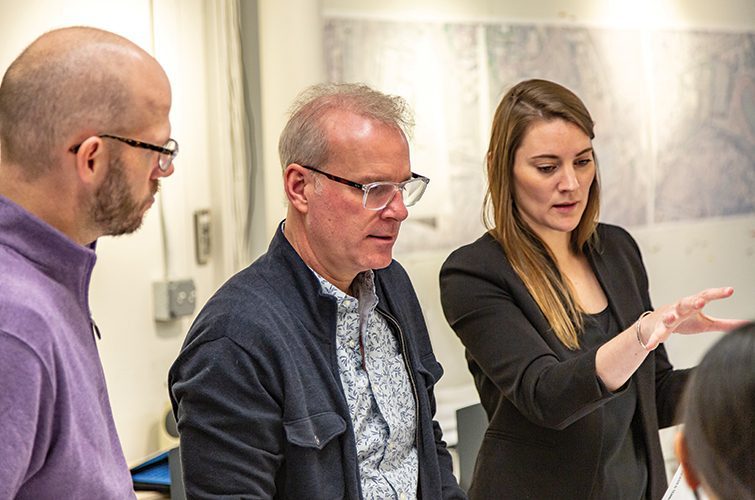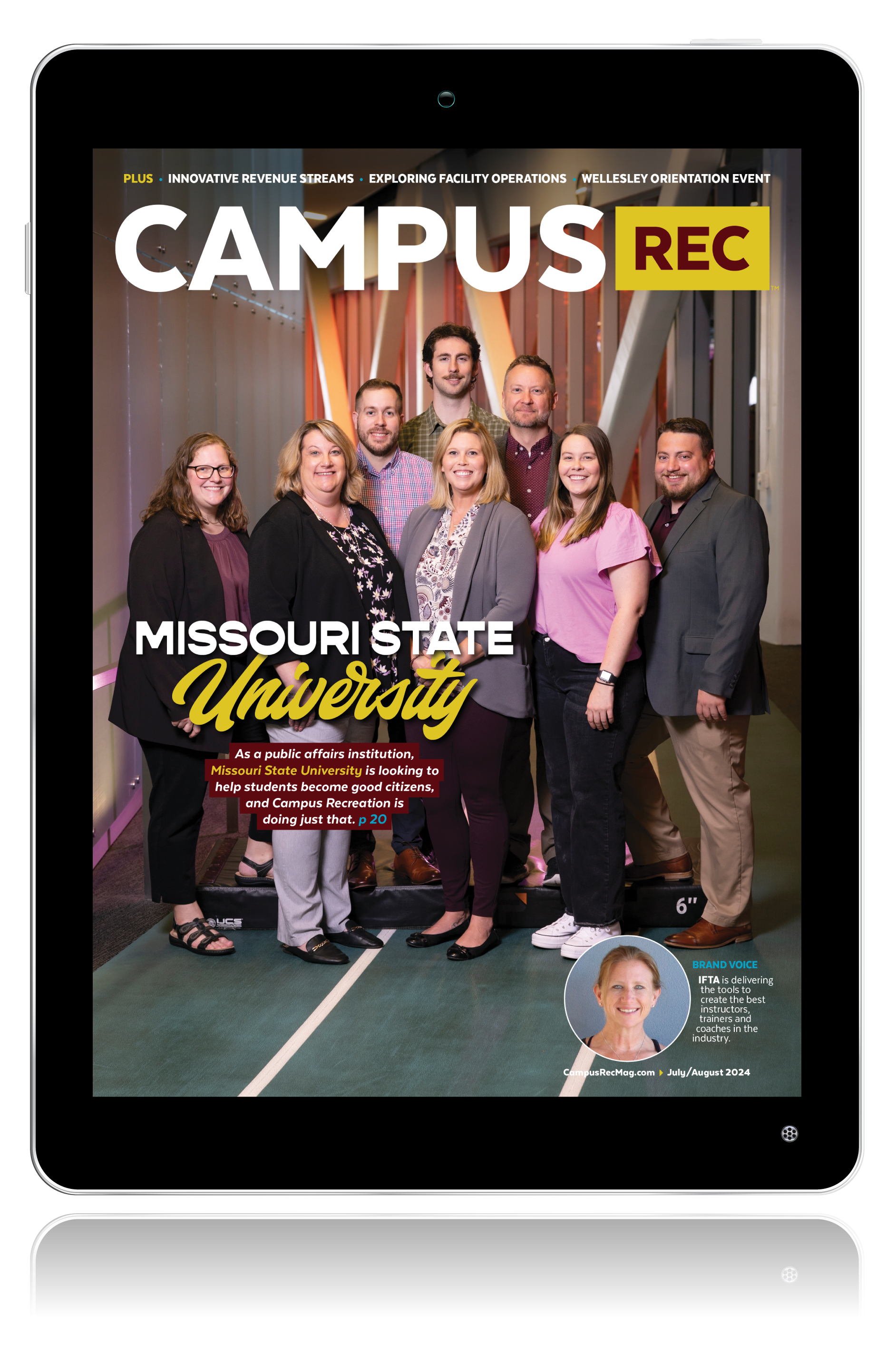How do we prove our value?
That is one of the most commonly asked questions in the industry today. Campus recreation departments are striving to prove their programs, staff and facilities are a relevant part of the campus mission. But they know their value; it’s just proving it to the upper administration.
However, the industry of campus rec has little to prove to Sasaki Associates, Inc. when it comes to its value. The architecture and design firm has a team who is very aware of campus recreation’s impact.
“These buildings and programs they serve provide incredible value to an institution’s mission, and the recent focus on student wellness adds a whole new level of interesting consideration when it comes to student development and support,” said Bill Massey, a sports practice leader, architect and principal at Sasaki.
It was 25 years ago that Massey dove into campus architecture. But as time went on, he fell in love with recreation in particular. “Recreation can have such a positive influence on a student’s experience, and architecturally, recreation facilities often have a strong and inviting presence on a college campus,” he shared.

The design firm Sasaki has been creating facilities that do just that since 1953, and Massey joined the team in 2007, working on dozens of recreation facilities since. Currently, he is completing design on a new recreation and wellness center for Penn State University’s Behrend campus. It’s positioned to be a gateway building for the campus, allowing Massey to highlight wellness as an institutional priority, as well as advertise the fitness and wellness programs offered.
In fact, Emily Parris, an architectural sports designer and senior associate at Sasaki, was drawn to the company for its holistic approach to campus design. “At Sasaki, we are passionate about what we do,” she said. “We are recreation users, wellness enthusiasts, and playful fans of healthy competition and individual well-being. In many ways, this genuine interest and commitment to what we do allows us to be partners with our clients.”
Both Massey and Parris’ words seem to echo the Sasaki motto: “Better Design, Together.” In any project, there is no formula to follow. Instead, Massey shared it’s very workshop-like where clients and the firm explore ideas together. It’s important that during the years of a project trust is built with client partners. This is essential especially because of Sasaki’s key ingredient: creativity.
“Our secret ingredient is bringing really creative, and often unexpected, solutions to problems that no one else may have thought of,” said Massey. “We are willing to put out unconventional ideas to test the waters, and oftentimes, many of them stick. But even if they don’t, they inspire discussions that ultimately influence our design considerations as we continue exploring ideas.”

For example, Parris has worked on the Harold Alfond Athletics and Recreation Center at Colby College — which just opened after five years of design and construction. Sasaki Associates, Inc. served as the lead sports design architect working alongside internationally acclaimed Hopkins Architects. The project saw Colby’s nature and wellness values combine to create a hub of health for students, employees, athletes and the community. Parris explained one of her favorite features is the large exterior courtyard that is central to the building.
“This space is really unique in that it is naturally landscaped, but also programmed to accommodate group exercise or yoga classes, social club meetings, campus special events, or just as a peaceful space to have lunch or gather with friends,” she explained. “The goal is to create a welcoming and flexible space for all.”
On Massey’s project with Penn State, they are bringing together traditional recreational and fitness programs with the campus counseling center. As such, they’ve intentionally made the counseling center visible and accessible while also allowing the center to operate in a way that gives patients privacy. Massey said it’s been a successful combination of multiple programs that contribute to holistic wellness.
For Sasaki, it’s essential to keep in mind every project is different. Every building has a personality, tied to the mission of the recreation department, and needs to have that reflected in the final product.
Massey said they look to create an engaging and exciting experience for users. That is what determines if Sasaki has succeeded or not. He shared three key questions they ask:
- What does it feel like when someone first enters the building?
- What invisible attributes engage a user and makes them want to come back?
- What environment and spatial attributes of a building give recreation staff the ability to tailor their programs with changing trends?
“We take great pride in an outstanding design solution that not only contributes to the fabric of an individual campus but creates an identity for campus recreation that is unique to a recreation department’s program and aspirations,” said Massey.
So, although the buildings will be beautiful, the experience that Sasaki helps create is vital. And while Massey shared their work has to be exceptional, he also said that means bringing in the campus recreation staff on any project into the design process.
The fact of the matter is each rec department has different needs for its facility. They are only found out by listening. “We are keen listeners, and we bring no assumptions about what’s right or what’s wrong when we explore ideas with our clients,” said Massey. “The best way to get things right is to listen to the needs of our clients and respond with options that help them define what’s best for their program, both in the short and long term.”

In fact, the clients are Parris’ favorite part of her career. She said the recreation and wellness community is warm, welcoming and collaborative. With a design and construction process that can span several years or more, she said it’s been a joy to work with people who are as eager as she is to make a positive impact.
“I would characterize my clients as thoughtful and creative teammates who are open to new ideas and new possibilities,” she said. “Plus, they are really fun and interesting people to spend time with.”
After years of planning and development, Massey said there’s nothing like the look on a client’s face when they enter a new recreation facility for the first time. Because for Sasaki, it’s all about the client and meeting their needs. It’s also about collaborating, learning from one another, and ultimately creating a building that serves its users day in and day out.
“I go into every project with an appreciation that I’m going to learn something new from our recreation partners,” said Massey. “At some point in the process, we’re going to come up with an exciting spark together that will help define the direction of the design we take.”
That spark can often turn into a flame that blazes brightly with the value, impact and power of campus recreation on campus, and all because Sasaki Associates, Inc. believes that better design happens together.











